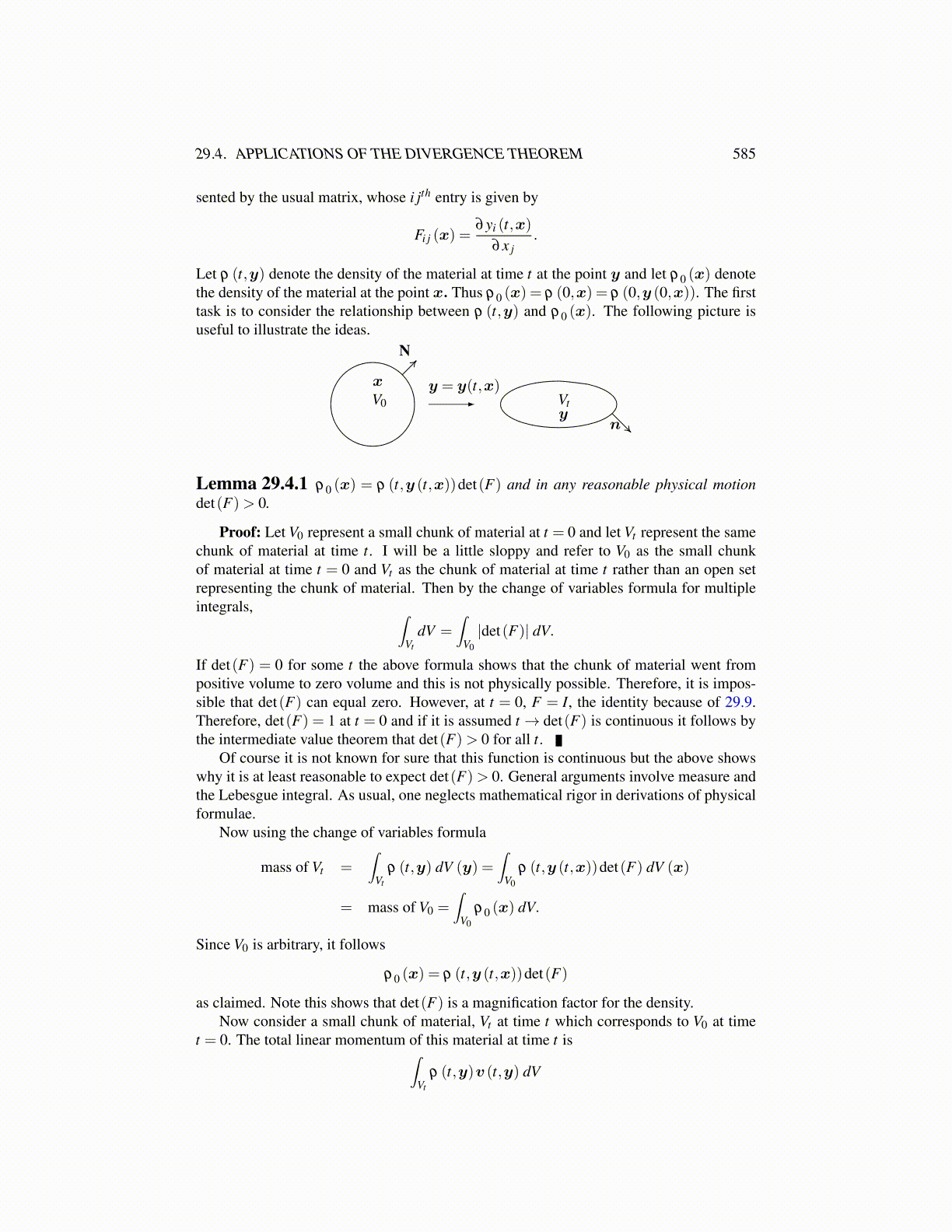
29.4. APPLICATIONS OF THE DIVERGENCE THEOREM 585
Summing these up over the pieces of ∂Vt and ∂V0, yields the last integral in 29.10 equals∫∂V0
det(F)(T F−T )
ip NpdA
and so the balance of momentum in terms of the material coordinates becomes∫V0
ρ0 (x)vt (t,x) dV =∫
V0
b0 (t,x) dV +∫
∂V0
ei det(F)(T F−T )
ip NpdA
The matrix det(F)(T F−T
)ip is called the Piola Kirchhoff stress S. An application of the
divergence theorem yields
∫V0
ρ0 (x)vt (t,x) dV =∫
V0
b0 (t,x) dV +∫
V0
ei
∂
(det(F)
(T F−T
)ip
)∂xp
dV.
Since V0 is arbitrary, a balance law for momentum in terms of the material coordinates isobtained
ρ0 (x)vt (t,x) = b0 (t,x)+ei
∂
(det(F)
(T F−T
)ip
)∂xp
= b0 (t,x)+div(det(F)
(T F−T ))
= b0 (t,x)+divS. (29.13)
As just shown, the relation between the Cauchy stress and the Piola Kirchhoff stress is
S = det(F)(T F−T ) , (29.14)
perhaps not the first thing you would think of.The main purpose of this presentation is to show how the divergence theorem is used
in a significant way to obtain balance laws and to indicate a very interesting direction forfurther study. To continue, one needs to specify T or S as an appropriate function of thingsrelated to the motion y. Often the thing related to the motion is something called the strainand such relationships are known as constitutive laws.
29.4.6 Frame IndifferenceThe proper formulation of constitutive laws involves more physical considerations such asframe indifference in which it is required that the response of the system cannot dependon the manner in which the Cartesian coordinate system for the spacial coordinates waschosen.
For Q(t) an orthogonal transformation,
y′ = q (t)+Q(t)y,
the new spacial coordinates are denoted by y′. Recall an orthogonal transformation is justone which satisfies
Q(t)T Q(t) = Q(t)Q(t)T = I.